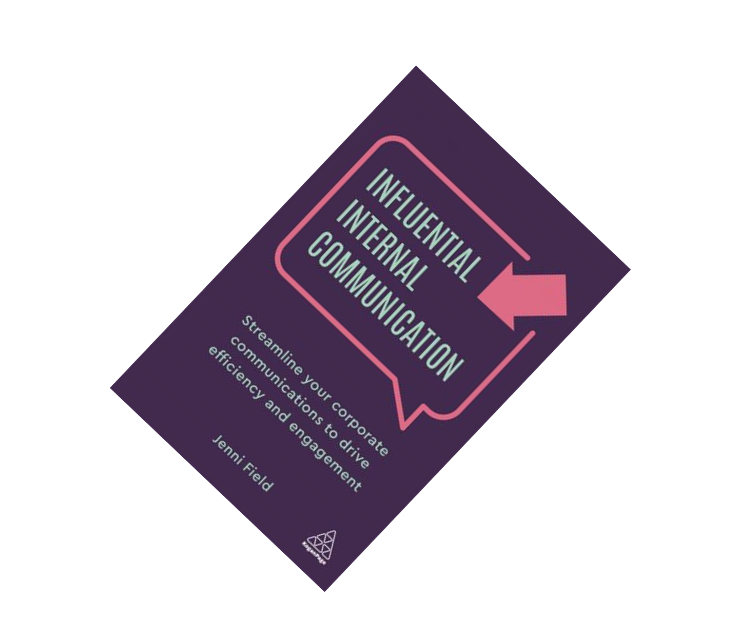Review: Influential Internal Communication

About the author
Kevin is a co-founder of PR Academy and editor/co-author of Exploring Internal Communication published by Routledge. Kevin leads the CIPR Internal Communication Diploma course. PhD, MBA, BA Hons, PGCE, FCIPR, CMgr, MCMI.

Influential Internal Communication: Streamline your corporate communication to drive efficiency and engagement
By Jenni Field
Kogan Page, 2021, 211 pages
This book by Jenni Field extends a growing body of publications dedicated to internal communication.
As Jenni emphasises from the start, it is not an academic book. But neither is it a simplistic channel and message-oriented book. Indeed, the underlying theme here is that understanding organisations, people, and culture is the starting point for good internal communication – rather than focusing on channels and content without taking account of the broader context.
The book is written in a very engaging tone and style with a summary of key points and quick tips at the end of each chapter. There are two parts, one on understanding organisations and people and one on diagnosing and addressing issues that can be discovered through research and data analysis.
One point that stands out is the suggestion that internal communication is the antidote to chaos, where chaos is understood as a ‘state of utter confusion’.
The author makes a strong argument that there is inherent chaos everywhere because of the complexities that are involved in running large organisations today. This is exemplified by having lots of meetings without moving things forward, high levels of stress, team friction, a lack of fairness, an inability for decisions to be made, and a loss of purpose. This situation can be exacerbated by internal communication campaigns that simply don’t make any difference because they are not aligned to meaningful and measurable objectives.
The book includes dedicated chapters on leadership and people. Both are useful primers for anyone who has not read up on these two critical factors that directly affect the potential impact of internal communication.
The chapter on leadership has two sections that resonated strongly; servant leadership and the importance of emotion. These points reflect a growing body of research that highlights the importance of leadership communication focused on listening and empathy for higher levels of employee engagement and a positive employee experience. The chapter on people incorporates some useful background on neuroscience and a good section on trust and fear that is very informative for employee-centric internal communication practice.
In the second part of the book, the author provides a model for understanding, diagnosing and fixing issues that are often associated with states of confusion. This approach emphasises the mistakes that can be made when internal communication managers are presented with a ‘problem’ and then told what the ‘fix’ is (and this is often a poster or a video). There is also a chapter dedicated to data and diagnostics that covers listening interviews, surveys and polls. Tips are provided for using the tools together with points to watch out for. There is sound advice on guarding against bias.
The book concludes with strong sections on purpose, leadership, teamwork, and the role of line managers. As she highlights, internal communication managers have to call out behaviours such as leaders who are too busy for people, who say one thing and do another, who share unverified information or who are inconsistent in their communication. A coaching approach is advocated to support leaders to become more honest and genuine.
Although the book includes many useful mini case studies and helpful tips throughout, it could occasionally provide more detailed examples to illustrate how to tackle some of the difficult cultural and leadership blockers that internal communication managers sometimes face. That said, it is refreshing that a book about internal communication takes such a broad organisational and people-oriented perspective.
Internal communication that is reduced simplistically to copy writing, messaging, video production or event management without a good understanding of how organisations work is unlikely to have the desired impact.
This book is therefore a publication that builds from a knowledge of basic capabilities, challenging practitioners to think more broadly and to incorporate research and analysis into effective practice.
Jenni Field is a guest tutor on PR Academy’s delivery of the CIPR Specialist Diploma: Internal Communication
The book is available from Kogan Page here and readers can secure a 20% discount by using the following code: PRACADEMY20